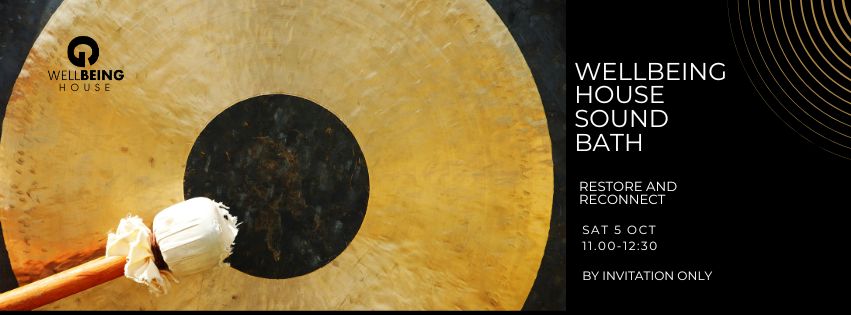In today’s fast-paced world, mental health and wellbeing are more important than ever. One increasingly popular method to enhance mental and physical health is sound therapy. This innovative form of treatment harnesses the power of sound and music to encourage relaxation, reduce stress, and promote overall mental clarity. From ancient practices to modern applications, sound therapy offers a diverse array of benefits that can help improve our mental health.

What is Sound Therapy and How Does it Work for Mental Health?
Understanding the Concept of Sound Therapy
Sound therapy is a holistic approach that utilizes various sounds to treat physical and mental health issues. This therapy may include different types of sound modalities such as music therapy, sound healing, and sound baths. Patients with fibromyalgia, anxiety disorders, and other chronic conditions have reported significant relief through sound therapy by engaging with sound waves and frequencies that resonate with their body and mind.
Mechanisms Behind Sound Therapy Work
At its core, sound therapy works by using sound waves to stimulate the brain and body. These sound waves activate the auditory pathways which in turn engage the nervous system and trigger relaxation responses. For instance, listening to music with specific frequencies can lower blood pressure and reduce stress levels. Different sounds, such as those produced by a Tibetan singing bowl or tuning forks, create vibrations that can harmonize with our body’s vibrations, promoting a state of mental and physical equilibrium.
Scientific Evidence Supporting Sound Therapy for Mental Health
The benefits of sound therapy are supported by a growing body of scientific research. One study demonstrated that music therapy sessions significantly reduced anxiety and depression in patients with chronic illnesses. Another study found that sound healing therapy using Tibetan singing bowls could decrease stress and improve overall mood. These findings highlight how sound and music can be powerful tools in enhancing mental and emotional health.

What Are the Different Types of Sound Therapy?
Various Modalities: Music Therapy vs. Sound Healing
Sound therapy encompasses several modalities, each offering unique benefits. Music therapy, for example, involves the systematic use of music to address individual goals within a therapeutic setting. Sound healing, on the other hand, focuses on the therapeutic effects of specific sound frequencies and vibrations. Both types of sound therapy can help improve mental health by promoting relaxation, emotional stability, and mental clarity.
An Introduction to Sound Baths and Singing Bowls
A sound bath is a meditative session where participants are enveloped in sound waves produced by instruments like singing bowls, gongs, and tuning forks. These sessions can induce deep relaxation and stress relief. Singing bowls, particularly Tibetan singing bowls, are commonly used in sound baths for their rich, resonant tones. The vibrations from these bowls interact with the body’s energy centers, encouraging a state of physical and mental harmony.
Exploring Tibetan Sound Therapy and the Use of Tuning Forks
Tibetan sound therapy is an ancient practice that utilizes Tibetan singing bowls and chants to bring about healing and balance. Similarly, tuning forks are used to deliver sound stimulation directly to the body’s energy fields. These forks emit sound frequencies that can target specific areas of tension or imbalance, promoting a holistic sense of wellbeing.
How Can Sound Therapy Benefit Mental Health?
Stress Reduction and Relaxation Through Sound
One of the most significant benefits of sound therapy is its ability to induce relaxation and reduce stress. By listening to calming music or participating in sound baths, individuals can experience a decrease in stress hormones and an increase in relaxation responses. This effect can help improve mental health, providing a much-needed respite from the pressures of daily life.
Improving Sleep Quality with Nature Sounds and Binaural Beats
Sound therapy also offers effective solutions for those struggling with sleep issues. Nature sounds and binaural beats have been shown to improve sleep quality by soothing the mind and reducing brain activity associated with wakefulness. Incorporating these sounds into a nightly routine can promote deeper, more restorative sleep, enhancing both mental and physical health.
Emotional Healing and Mental Clarity Using Sound Therapy
Sound therapy can be a powerful tool for emotional healing and mental clarity. The frequencies and vibrations used in therapy can help release emotional blockages and encourage a more balanced mental state. Whether through music therapy sessions or the use of a Tibetan singing bowl, sound therapy can help reduce anxiety, improve mood, and foster a sense of inner peace.
What Are Some Effective Techniques in Sound Therapy?
Listening to Music for Therapeutic Benefits
One of the most accessible forms of sound therapy is simply listening to music. Music with specific frequencies and rhythms can have profound therapeutic effects, from reducing stress to enhancing focus and concentration. Regularly incorporating music into your routine can provide ongoing benefits to your mental and emotional health.
Using Singing Bowls and Tuning Forks for Vibrational Therapy
Singing bowls and tuning forks are commonly used in vibrational therapy due to their ability to produce powerful, healing vibrations. Singing bowls, especially, can create harmonic tones that foster deep relaxation and meditation. Tuning forks, on the other hand, can be applied directly to the body, providing targeted sound stimulation that can help relieve tension and promote balance.
The Role of Frequencies and Gongs in Sound Healing Sessions
Frequencies and gongs play a crucial role in sound healing sessions. Specific sound frequencies are carefully selected for their therapeutic properties, while gongs provide a full spectrum of vibrations that can envelop participants in a deep, immersive healing experience. These elements work together to create a powerful soundscape that can support mental and physical health.

How to Incorporate Sound Therapy into Daily Life?
Practical Tips for Beginners in Sound Therapy
Incorporating sound therapy into daily life doesn’t have to be complicated. Beginners can start by setting aside a few minutes each day to listen to calming music or nature sounds. Apps that provide binaural beats and guided sound therapy sessions can also be a great resource. The key is to stay consistent and make sound therapy a regular part of your routine.
Creating a Sound Therapy Routine at Home
Creating a sound therapy routine at home can be both simple and effective. Designate a quiet space where you can practice sound therapy without distractions. Use singing bowls, tuning forks, or play recorded sound baths to create a soothing environment. Consistent practice can enhance the benefits and make sound therapy a meaningful part of your wellness routine.
Finding Professional Sound Therapy Services
For those seeking a more personalized approach, finding a professional sound therapist can be highly beneficial. These practitioners are trained to use sound therapy techniques tailored to your specific needs. Whether you opt for music therapy sessions or sound healing treatments, professional services can offer deeper insights and more targeted therapeutic outcomes.
In conclusion, the benefits of sound therapy for mental and emotional health are extensive and well-supported by research. From reducing stress and improving sleep to fostering emotional healing and mental clarity, the therapeutic power of sound and music is undeniable. By exploring the different modalities and techniques available, you can find the sound therapy approach that best suits your needs and start reaping the benefits of a more balanced, harmonious life.
FAQ
What are the benefits of sound therapy for mental health and wellbeing?
Sound therapy has numerous benefits, including reducing stress, alleviating anxiety, and improving overall mental clarity. The therapeutic use of sound can help patients achieve a calmer state of mind and enhance their physical and emotional health.
How does sound therapy help in reducing stress?
Sound therapy employs various forms of sound healing, such as low-frequency sound stimulation and the use of crystal bowls, to promote relaxation and reduce stress. These sounds can also lower cortisol levels, helping you to feel more at ease.
What is the role of brain waves in sound therapy?
Different kinds of sound therapy can influence brain waves, promoting relaxation and positive mental states. For instance, music therapy may involve specific rhythms and frequencies to regulate brain activity, supporting mental health.
How do forms of sound healing support physical well-being?
Sound therapy not only benefits mental health but also supports physical well-being. The vibrations from low-frequency sounds can improve circulation and reduce pain, providing a holistic approach to therapy.
What types of sound therapy are commonly used?
Common types of sound therapy include the use of crystal bowls, music and sound therapies, and low-frequency sound stimulation. Each method provides unique healing aspects of sound to improve emotional and physical health.
What does research say about the benefits of sound therapy?
Research shows that sound therapy can be a highly effective form of sensory therapy. For example, researchers from the University of California found significant mental health improvements in patients who underwent regular sound therapy sessions.
How can sound therapy be used to help patients with anxiety?
Sound therapy can help patients with anxiety by using soothing sounds and frequencies to calm the mind. Techniques such as the use of light and sound combinations can further enhance the therapeutic experience, easing anxious thoughts.
Can sound therapy cure mental disorders?
While sound therapy can significantly improve mental health and well-being, it is not typically considered a cure for mental disorders. Instead, it is most beneficial as a complementary therapy that supports other treatments.
How are crystal bowls used in sound therapy?
Crystal bowls produce resonant sounds that can enhance physical and emotional health. When played, these bowls emit soothing frequencies that can help in reducing stress, promoting relaxation, and improving mental clarity.







